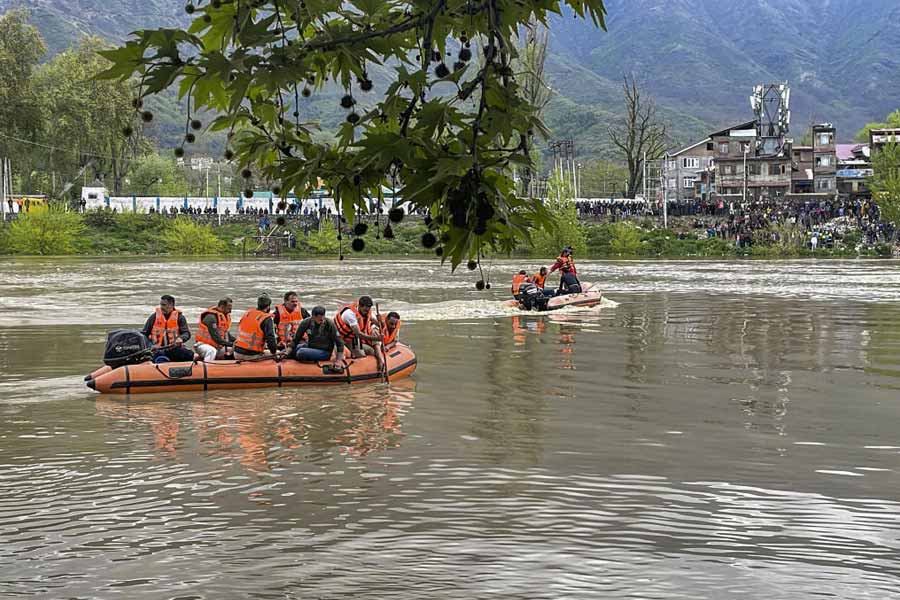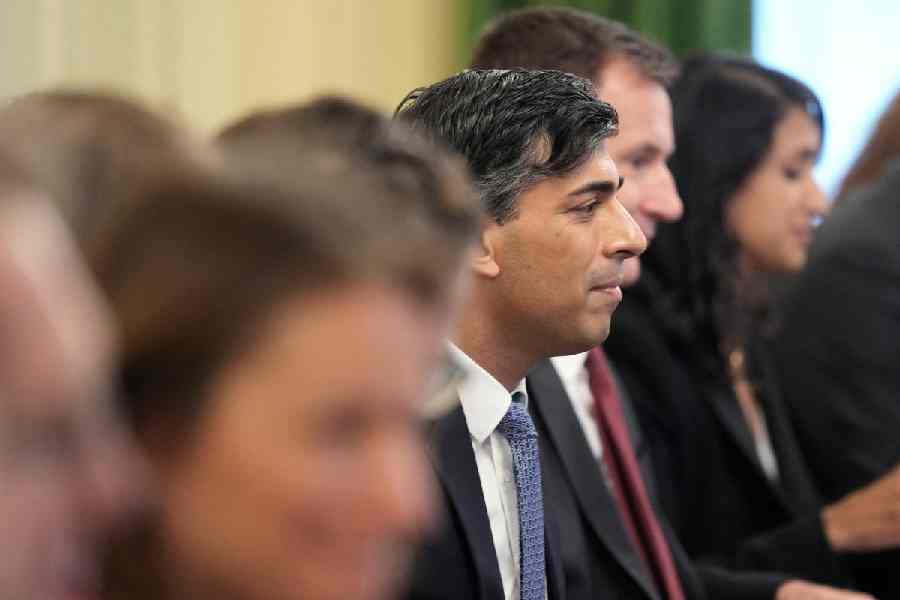
The Asia-Pacific, like Asia, emerging Asia or South Asia, is a fungible term and not easy to define. In the 1980s, the term was associated with membership of the Asia-Pacific Economic Cooperation initiative, but after the Barack Obama visit last year, it apparently includes India, at least in the strategic thinking of the United States of America.
Nothing over the past few decades has changed the global economy like the rise of China, which, with the industrialization and modernization of some other parts of Asia, has led to a remarkable transformation over the past three decades, and is the reason for the reorientation of the global economy towards the Asia-Pacific. From being recipients of manufactures to exporters of a competitive variety of goods and services, emerging Asia now impacts global financial markets, production networks and pricing of commodities, apart from having an increasing bearing on global political strategies. Four Asian countries, apart from Japan, are in the top 16 of the World Bank's gross domestic product table for 2014 - China, India, South Korea and Indonesia, and there are many positive Asian trends to be discerned, political, institutional, technological and educational among them. Indian, Chinese and South Korean cultures, especially popular culture, have gone global and added immensely to soft power perceptions.
If these trends in basic indicators continue, the Asian element in the Asia-Pacific's political and economic influence will increase, but the Asian rise requires technology and specialized skills to climb the value-added chain and avoid the middle-income trap. The unsettled relationship among rising and established powers, and between the rising powers themselves, may delay the advent of any 'Asian century', although dire predictions of the implosion of China and the descent of India into dystopia have proved wrong, and there is growing optimism among the Asian capitals. It remains an open question whether the Asian rise will lead to emerging Asia constituting a new group of world powers, though clearly China is already on the way to that status with its yuan becoming a reserve currency and the main currency in Zimbabwe, besides the Belt and Road, the Asia Infrastructure Investment Bank and the Free Trade Area of the Asia-Pacific initiatives. While Chinese interests have acquired a global character, the rest of emerging Asia is mainly an economic and cultural phenomenon, although Taiwan, South Korea and Singapore show that with right interventions, developing countries can catch up with the advanced world.
Most emerging Asian countries are allergic to the view that outsiders should prescribe policy preferences for them, but they do not yet present a rival ideology to the West. Over time they might offer an alternative discourse of modernity, such as questioning the free market and democracy with a form of Sino-style semi free-market model within an authoritarian framework, but there is little conformity or parallel timelines across the concerned countries. The Asians are busy stressing their differences rather than their commonalities, especially in South Asia, and even big and ancient Asian civilizations like India and China have not articulated any world view apart from the Five Principles of Peaceful Coexistence and Xi Jinping's four principles of great power relations which are too vague to build upon.
The other side of the coin is that emerging Asia remains the home of every conceivable instability. With huge concentrations of population, big increases in the aspirational middle class, concerns over terrorism and proliferation of nuclear weapons, inter-state and intra-state tensions, abject poverty and climate-change fears, the region enjoys neither political nor economic unity, with systems of government ranging from communism to liberal democracy. There are many unresolved territorial disputes. The Korean peninsula is the most heavily armed region in the world, North Korea is a nuclear weapon state and so are India and Pakistan. The strategic re-balancing exercise of the US regarding the Asia-Pacific is understandably seen by China as unhealthy containment. If there is any outbreak of warfare in Asia, the negative impact on the global economy would be immeasurable.
The political map is not the same as the economic map, and Asian integration will depend on relations between China, Japan and India, the big three on whom any new Asian architecture would need to be based. But they are too domestically preoccupied and still have too little say in global institutions. In spite of the disputes, emerging Asian economies are likely to focus on economic growth without external adventures. India and China account for half the global economic growth, with high savings and investment rates, although India's economy is too closed to incorporate with any of the deep-integration free trade areas of Asia. China keeps interest rates low in the West even as it makes the difficult transition from manufacturing to services, high investment to higher consumption, and State-driven decisions to free market determination. In spite of foreign exchange reserves of $7.29 trillion, emerging Asia is unusually dependent on consistent high growth to address inequalities, mitigate environmental degradation, compete for finite natural resources and ensure food security. The economic boom is essential for the authority of the Communist Party of China, and increasingly important for re-election in democratic countries like India.
Asian cooperation, as seen in the Association of Southeast Asian Nations regional forum, the Asean or the South Asian Association for Regional Cooperation, is in the spirit of Asian norms, in other words, good platforms for economic cooperation but falling well short of robust political engagement. Rhetoric about 'win-win' cooperation and attempts to craft a common narrative have not provided the commonalities needed for these countries to construct the appropriate architecture for political cohesion or to settle disputes.
China's interests as a rising state can clash with those of the other trans-Atlantic power, the US, and competition for global resources and political and military tensions generate causes of concern. The age of US primacy in Asia as the non-resident power is drawing to a close but China cannot displace it while the US has decided to reassert its influence in Asia. It is difficult to find evidence of any real pivot for Asia, and its central component might comprise the Trans-Pacific Partnership, which is limping towards the finishing line; negotiations took more than six years and there may not be political support for the TPP in the US Congress.
Economic interdependence fosters cooperation, and the benefits of deep integration are too strong for the parties to resist. American allies in Asia, like Japan, South Korea, Philippines, Taiwan, Singapore, and supporters like Vietnam and Thailand, all have stronger economic ties with China than with the US. Political cooperation will grow on the back of increasing intra-regional economic flows, and there have been remarkable initiatives to address decades of hostility in the recent meetings between the leaders of China, Japan and South Korea and between China and Taiwan.
Now that, courtesy the US, India has become an honorary member of the Asia-Pacific, where does it stand in this scenario? India has had no involvement in the unfolding tensions in the Asia-Pacific, the China/Japan and Korea/Japan strife-strewn histories, the islands disputes, Korean unification or the Taiwan Strait. There can be no question that China is the flying goose that gives the upthrust to economies all over the Asia-Pacific, but India is not without its assets. It is diminished by its incessant quarrel with Pakistan, but its disorderly politics, though Indians despair of it, is admired by all countries, like Myanmar and Nepal, attempting to move in a democratic direction. India is advantageously placed in spite of its low-income status because no big power can afford to ignore India. Its rise is considered benign, and its future full of promise.
India should maintain friendly relations with major powers, but avoid too close an identity with the US strategic agenda which is fickle. It should actively pursue normalization of relations with China, including by educating its public. In no country in the world is China regarded with greater ignorance and hostility, with the result that every Chinese activity in South Asia is wrongly interpreted as Indo-centric. There will be no international support for India in any conflict with China or Pakistan; this calls for faster movement towards determining the line of control with China and fresh thinking on Pakistan, which has become the 'indispensable nation' to Afghanistan, China, the US and many countries in the Arab peninsula. New Delhi cannot expect third countries to pull its chestnuts out of the fire. It should forget about South Asia or the Indian Ocean being an exclusive sphere of Indian influence, but concentrate on our legitimate security interests and encourage partners to be stakeholders in our economic growth. As T.N. Ninan has affirmed in The Turn of the Tortoise, economic growth is India's best foreign policy.
The author is a former foreign secretary of India










